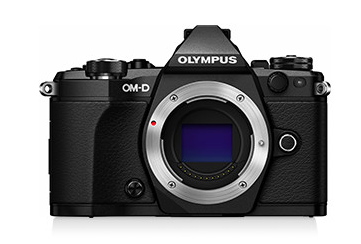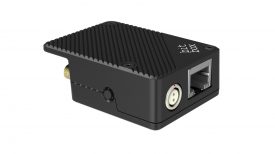By technical editor Matt Allard:
The Olympus OM-D EM-5 Mark II from the outside looks almost identical to its predecessor the EM-5. The retro styled dustproof and splashproof 16MP Micro four thirds camera has enhanced movie capabilities. It shoots 1080p video up to 60fps and also has 24p, 25p, 30p, and 50p frame rates. The original E-M5 could capture 1080i60 video from a 30p sensor output using a process called progressive segmented frame recording (PsF). This allows editing of the material as if it was originally captured as 30p footage. The AVCHD compression limited the original EM-5 to a 20Mbps bitrate and only allowed recording times up to 22 minutes. The Mark II version can record 1080P 60p at bitrates of up to 51Mbps using IPB compression, or 30p footage at up to 77Mbps using All-I compression. You can also send clean 4:2:2 video out of the HDMI port for external monitoring and recording but be aware you cannot record internally and externally at the same time.
Unlike the original E-M5, Olympus has also added a microphone jack and allows you to adjust the levels while recording. The microphone options let you specify separate recording volumes for both the internal and external mics. By using an optional Olympus Voice Recorder you can even provide +48v phantom power to an external microphone. To monitor audio you have to buy the optional HLD-8G battery handgrip which has a headphone jack built into it.
Curiosity from John Brawley on Vimeo.
One of the stand out features of the original E-M5 was the 5-axis image stabilization system which was widely praised. Olympus claims the new version is even better and can compensate for up to 5 stops of shake. Sony’s 5-axis system that arrived last year in the a7 Mark II claims 4.5 stops.
The E-M5 Mark II is also first Olympus to offer a focus peaking function for video recording which should greatly help with manual focussing. Strangely the Olympus website says peaking is disabled when using the HDMI output. The camera also records timecode – a first from Olympus.
Image quality is impossible from the samples currently online. The original EM-5 suffered from a soft image that wasn’t really suitable for professional production. Hopefully this new model is better but only time will tell.
Olympus is definitely not targeting 4K shooters with this HD only offering. It will be interesting to see who buys this camera as it has tough competition from cameras such as the Samsung NX1, Sony a6000 and Sony a7 and a7 Mark II.
The Olympus E-M5 Mark II is expected to retail for $1100US.






